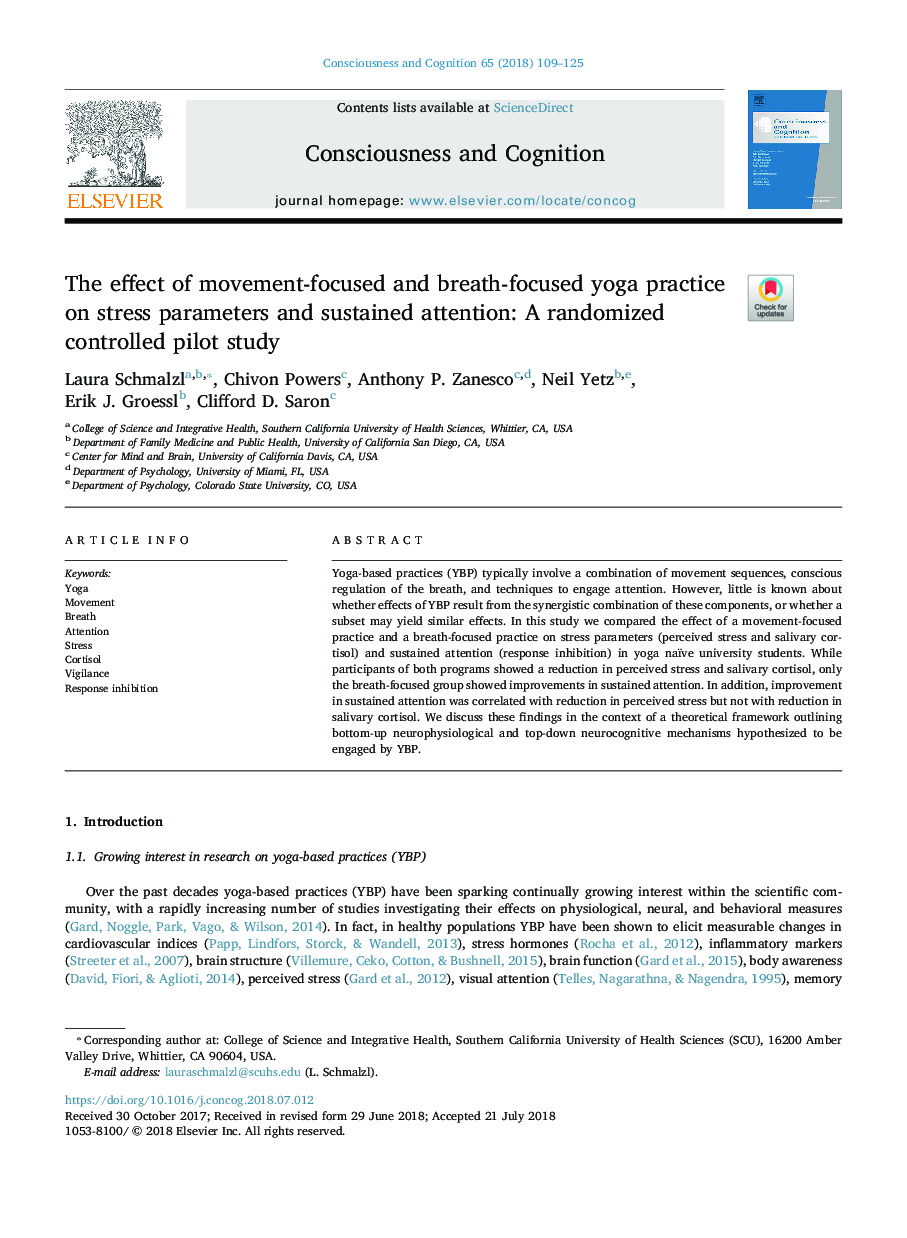| Article ID | Journal | Published Year | Pages | File Type |
|---|---|---|---|---|
| 7287751 | Consciousness and Cognition | 2018 | 17 Pages |
Abstract
Yoga-based practices (YBP) typically involve a combination of movement sequences, conscious regulation of the breath, and techniques to engage attention. However, little is known about whether effects of YBP result from the synergistic combination of these components, or whether a subset may yield similar effects. In this study we compared the effect of a movement-focused practice and a breath-focused practice on stress parameters (perceived stress and salivary cortisol) and sustained attention (response inhibition) in yoga naïve university students. While participants of both programs showed a reduction in perceived stress and salivary cortisol, only the breath-focused group showed improvements in sustained attention. In addition, improvement in sustained attention was correlated with reduction in perceived stress but not with reduction in salivary cortisol. We discuss these findings in the context of a theoretical framework outlining bottom-up neurophysiological and top-down neurocognitive mechanisms hypothesized to be engaged by YBP.
Related Topics
Life Sciences
Neuroscience
Cognitive Neuroscience
Authors
Laura Schmalzl, Chivon Powers, Anthony P. Zanesco, Neil Yetz, Erik J. Groessl, Clifford D. Saron,
